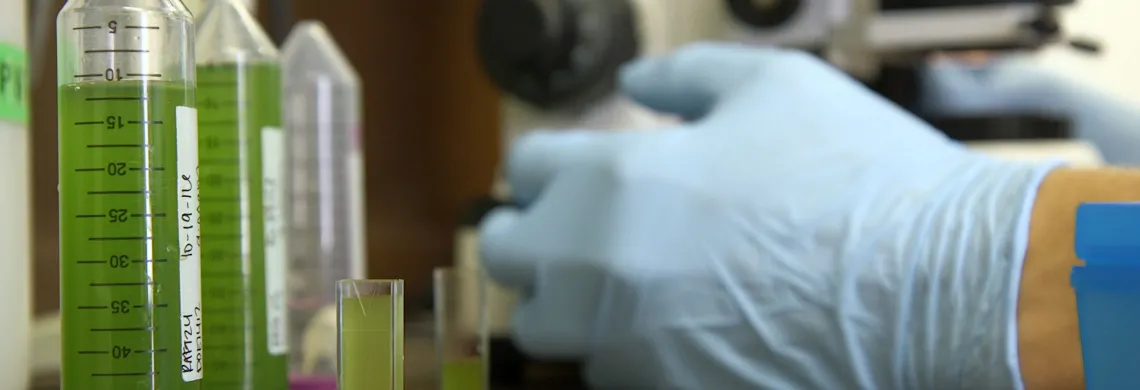Video: Turning Algae Into Jet Fuel
Not only is algae inexpensive and low-maintenance, but these UA researchers are using it to make everything from omega-3 supplements to kerosene.

At the University of Arizona, an interdisciplinary team of researchers led by Kimberly Ogden grows algae that can feed the world’s fish and fuel the world’s engines—an answer to the nine-billion-people-question that’s both environmentally and economically sound.
Supported by funds from the United States Department of Energy, the student and faculty researchers are developing new ways of creating energy and producing food, all with just the slimy green stuff that turns sunlight into carbs.
Why algae? According to Ogden, it’s cheap, low-maintenance, and it gets the job done. Algae only needs sunlight, carbon dioxide, and some salt to grow, ingredients that are readily and plentifully available already. Additionally, there are lots of different kinds of algae, all of which can grow in different kinds of waters, including freshwater from a pond, saltwater, or brackish water, which is somewhere between fresh and salty. After growing and harvesting it, one can turn algae into a number of different valuable products: food for all of the shrimp, salmon, and oysters that we eat, omega-3 supplement pills, or fuel. To make fuel, researchers squeeze the fatty, oily parts out of the algae and turn it into something very similar to kerosene, or jet fuel.
“My passion for working on problems to help a variety of different types of people from all different cultures and backgrounds has turned into doing research that can help both energy and food production,” said Ogden. “I like to make a difference, and it’s really cool to see that we can make progress and solve problems.”

